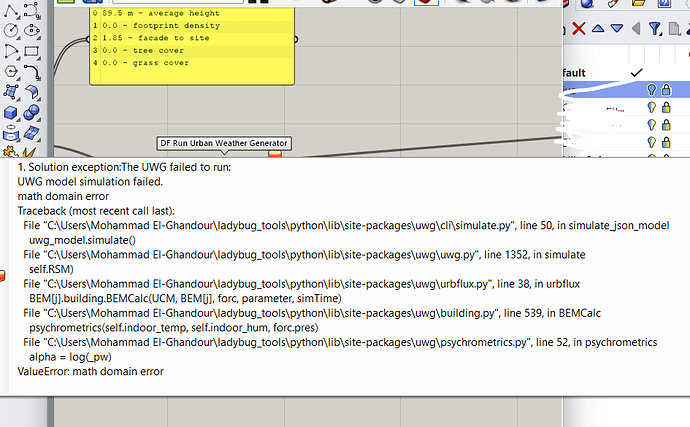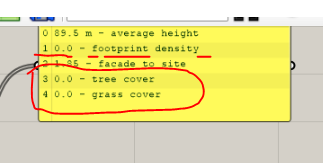- Solution exception:The UWG failed to run:
UWG model simulation failed.
math domain error
Traceback (most recent call last):
File “C:\Users\Mohammad El-Ghandour\ladybug_tools\python\lib\site-packages\uwg\cli\simulate.py”, line 50, in simulate_json_model
uwg_model.simulate()
File “C:\Users\Mohammad El-Ghandour\ladybug_tools\python\lib\site-packages\uwg\uwg.py”, line 1352, in simulate
self.RSM)
File “C:\Users\Mohammad El-Ghandour\ladybug_tools\python\lib\site-packages\uwg\urbflux.py”, line 38, in urbflux
BEM[j].building.BEMCalc(UCM, BEM[j], forc, parameter, simTime)
File “C:\Users\Mohammad El-Ghandour\ladybug_tools\python\lib\site-packages\uwg\building.py”, line 539, in BEMCalc
psychrometrics(self.indoor_temp, self.indoor_hum, forc.pres)
File “C:\Users\Mohammad El-Ghandour\ladybug_tools\python\lib\site-packages\uwg\psychrometrics.py”, line 52, in psychrometrics
alpha = log(_pw)
ValueError: math domain error
I am trying to create a simulation but I receive this error
Kindly does anyone know the reason for it? I need some help

